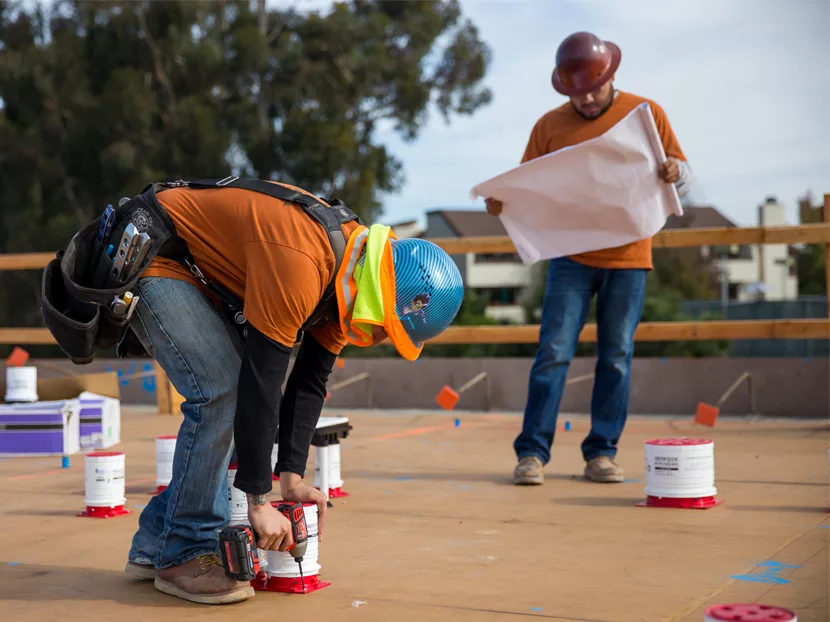Construction businesses all know the value of being adaptable. How they respond to change can solidify their competitive edge and even dictate their long-term survival. Never has it been more important to remain nimble and develop creative solutions as today. As the novel coronavirus, COVID-19, affects the entire world, several construction businesses and tradespeople are figuring out how to perform work safely and on time.
While some areas of the country have banned construction, The Cybersecurity and Infrastructure Security Agency’s list of essential workers does include plumbers as well as “engineers, technicians and associated personnel responsible for infrastructure construction and restoration, including contractors for construction and engineering of fiber optic cables.” So, if you do continue work on site during these times, there are few ways to better navigate a more challenging workflow.
1. Review Your Contract
This is the place to start to ensure your work is protected. COVID-19 is disrupting construction supply chains because of business closures, which could result in delayed projects. However, several contracts may give contractors flexibility if they have a “force majeure” clause. Consult with an attorney, but depending on the wording, this clause could give you a deadline extension and excuse you of any construction delays caused by events out of your control, such as a pandemic.
Understanding the force majeure clause could be beneficial during other periods of uncertainty and could help protect you and your business.
2. Keep Records
Specifically record disruptions, employee unavailability or required changes related to COVID-19 that have delayed your work. This will help you justify a schedule modification with your customers.
3. Communicate Constantly
Maintain trust with developers by telling them how you’re adjusting your workflow to address different challenges. Share ways they can get in touch with you and provide status updates on the construction project.
4. Anticipate Shift and Crew Adjustments
One of the most important things you can do during this time is make sure your team is safe and healthy by following the Centers for Disease Control and Prevention's (CDC) COVID-19 guidelines for workplaces. You can also review The Builders Association’s recommended best practices for construction jobsites. A good rule of thumb is to limit the amount of installers and construction workers gathered close together in a space and plan for alternative workflows in case supplies are delayed.
To help manage labor shortages due to health precautions, you may also want to consider using plumbing solutions designed to help you improve productivity.
Thinking Ahead: What Happens After COVID-19?
While many people are concerned about the current health of their business, it’s also critical to think about its future.
There’s no better time to consider and plan for the long-lasting business effects of this worldwide event than in the middle of it. What happens if delays of a current project interfere with other opportunities when things return to normal? What if one of your suppliers can’t get back on their feet quickly? Or if one of your major competitors has to close their doors? There are several possibilities and scenarios you should be outlining and strategizing for so you’re ready to hit the ground running when normalcy is restored.
The outbreak should also encourage you to develop a general emergency preparedness plan if you don’t already have one. It’s a huge lesson on how to safeguard your business and make sure it runs as smoothly as possible through major disruptions. Talk to your team and developers about what their biggest challenges are during this time, then brainstorm strategies you can use to mitigate similar hurdles in the future.
This article was originally published on www.holdrite.com.





